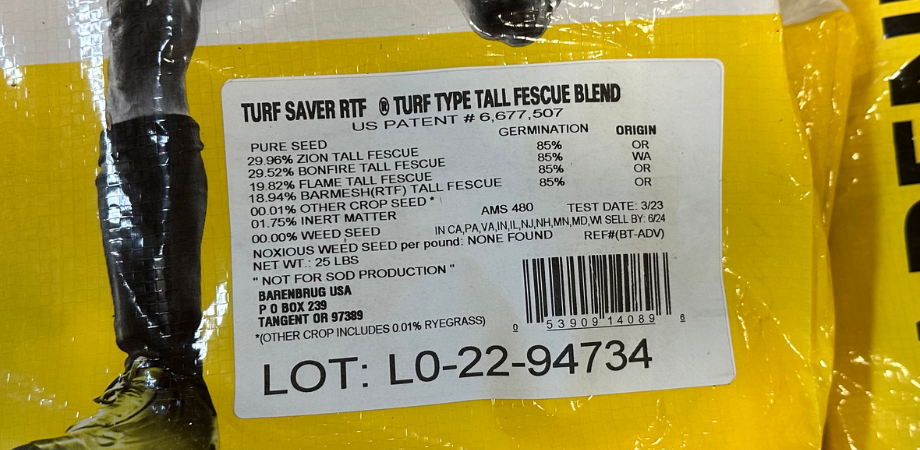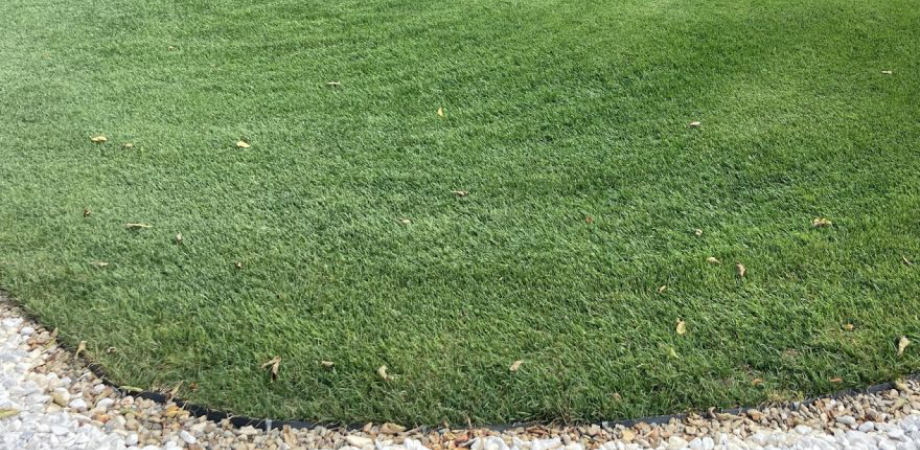Sports turf customers asked lots of great questions this year, and that got us thinking: We should put those questions and answers in one place for sports turf customers to bookmark and reference when needed. Explore the answers to Advanced Turf Solutions customers’ most commonly asked sports turf questions of 2023.
Question: How much water do I mix with this chemical?
Answer: Unfortunately, there is not an easy answer to this question. You will rarely, if ever, see how much water to mix with a chemical on its label because every sprayer is different. There are a few variables that this will be based on instead:
- First, it’s important to understand that water is simply the vehicle that the chemical is carried with. Essentially, you need to know how much water your spray rig will need in order to cover one acre and then mix the chemical accordingly.
The label will always state the amount of chemical that should cover 1,000 square feet and/or one acre. So, for example, if your spray rig is calibrated to 30 gallons per acre and the chemical label says it should take 54 ounces per acre, then you would need to put 54 ounces of chemical into 30 gallons of water. If you have three acres, it would take 162 ounces of chemical in 90 gallons of water to cover the three acres.
- Second, you need to know how to calibrate a spray rig. By using a simple formula (which our representatives provide), you can calculate the gallons per acre. Remember that variables such as speed, nozzle width, and spray tip size can all dictate spray volume.
Question: What is the best way to overseed?
Answer: Regardless of the tool or equipment you are using, the area being overseeded needs to be covered in at least two different directions at a minimum. For optimal coverage, spreading/broadcasting in three to four different directions will help prevent any skips; Remember that wherever the seed falls is where it will grow, so you’ll want to make sure to not miss any area.
Question: Why would I use a growth regulator on an athletic field?
Answer: Plant Growth Regulators, or PGRs, can and should be used on athletic fields to help control clippings, control growth, and create a denser surface that will handle traffic better.
A couple beneficial PGRs include:
- ArmorTech®PGR 113, which helps manage the growth of and improves the quality and stress tolerance of warm- and cool-season turfgrasses. It can also increase turf density and decrease water needs, giving it the ability to withstand summer heat.
- Musketeer Growth Regulator, which provides growth suppression of Poa annua in cool-season turfgrass species alongside the other benefits that PGRs are known for.
To take advantage of the full range of PGRs, many turf managers will mix a little in when painting the lines on their fields. The PGR will slow the top growth of the plant and will extend the life of the paint since you are not mowing it off.
Question: How much conditioner do I need for my field?
Answer: You should have about 1/4” of conditioner as a top dress on the field to aid with moisture management. Choose a conditioner like ATS1000 that is designed to both absorb moisture and reduce compaction on your infield.
Question: Do I really need irrigation on my athletic fields?
Answer: You should certainly have some type of irrigation set up on your athletic field. Water is:
- important for plant growth and development,
- used to improve playing surface conditions,
- used to help maintain the proper hardness on baseball/softball skinned infields,
- Keeps soccer, football, and other fields from getting rock hard—vital to ensuring good traction from players’ cleats.
Question: How often should I laser grade my field?
Answer: You should laser grade your field once per year. This will keep the grades on point and will result in fewer rainouts.
Question: How often should I repair the pitcher’s mound and batter’s box?
Answer: You should repair the pitcher’s mound and batter’s box after every event, practice, or game. A good rule of thumb to follow is that if the field is used, it’s best to top with a fresh coating of conditioner and cover with a tarp.
Question: Do I need to tarp my mound and plate?
Answer: Yes, you should tarp your mound and plate to keep the moisture in and keep the clay pliable.
Question: How can I improve my infield skins?
Answer: Use an engineered soil such as Advanced Engineered Soil and have it laser graded properly. That will help you and your players get out on their field quicker after rain events and improve ball roll and playability. Applying a conditioner like ATS1000 will also help with moisture management of your engineered soil.
Whether it’s answering questions or recommending products, our reps are here to help you maintain and preserve your sports turf for years to come. If you have any questions we didn’t answer here or are looking to learn more about sports turf care, your local rep would be happy to chat!












